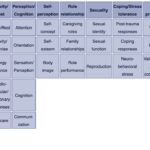Many healthcare providers find correctly assigning diagnosis codes for tick bites surprisingly challenging. The issue often stems from how Electronic Health Records (EHR) search functionalities operate and a misunderstanding of ICD-10-CM coding guidelines for injuries. Accurate coding, however, is crucial for proper billing and reflecting the true nature of patient encounters.
The primary reason for confusion is that coding for tick bites necessitates two diagnosis codes, classifying it as an injury under ICD-10-CM. This might seem excessive, but it’s essential to fully describe the medical scenario. The first code must originate from the injury chapter, detailing the specific injury itself and its location on the body. The second, equally important code, comes from the external cause chapter, explaining how the injury occurred – in this case, a tick bite.
A common pitfall arises when clinicians utilize the EHR search function, typing in “tick.” Often, the system misleadingly suggests W57.xxxA. While some systems might have altered the description to include “tick,” the official ICD-10 definition for W57.xxxA is “Bitten or stung by nonvenomous insect and other nonvenomous arthropods, initial encounter.” Technically, a tick is an arthropod, making this code seem relevant at first glance.
However, the critical error is that W57.xxxA is an external cause code. According to ICD-10-CM guidelines, external cause codes cannot be the primary diagnosis. They are supplementary codes intended to explain the circumstances surrounding an injury or condition. Frequently, providers mistakenly select only the W57.xxxA code, omitting the necessary primary injury code.
The correct approach involves selecting an “S” code first, which specifies the injury location. For instance, if the tick bite is on the left thigh, the appropriate injury code would be S70.362A, “Insect bite (nonvenomous), left thigh, initial encounter.” Then, and only then, should the external cause code, such as W57.xxxA, be added as a secondary code to explain the cause of the injury.
Therefore, coding a tick bite isn’t inherently difficult, but it requires a two-step process that EHR search functions often obscure. The ease of quickly searching “tick” can lead providers to inadvertently choose the wrong code, highlighting the importance of understanding the dual-coding requirement for injuries like tick bites. Remember to prioritize the “S” code for location and injury first, followed by the “W” code to explain the external cause. This ensures accurate and compliant medical coding practices.
